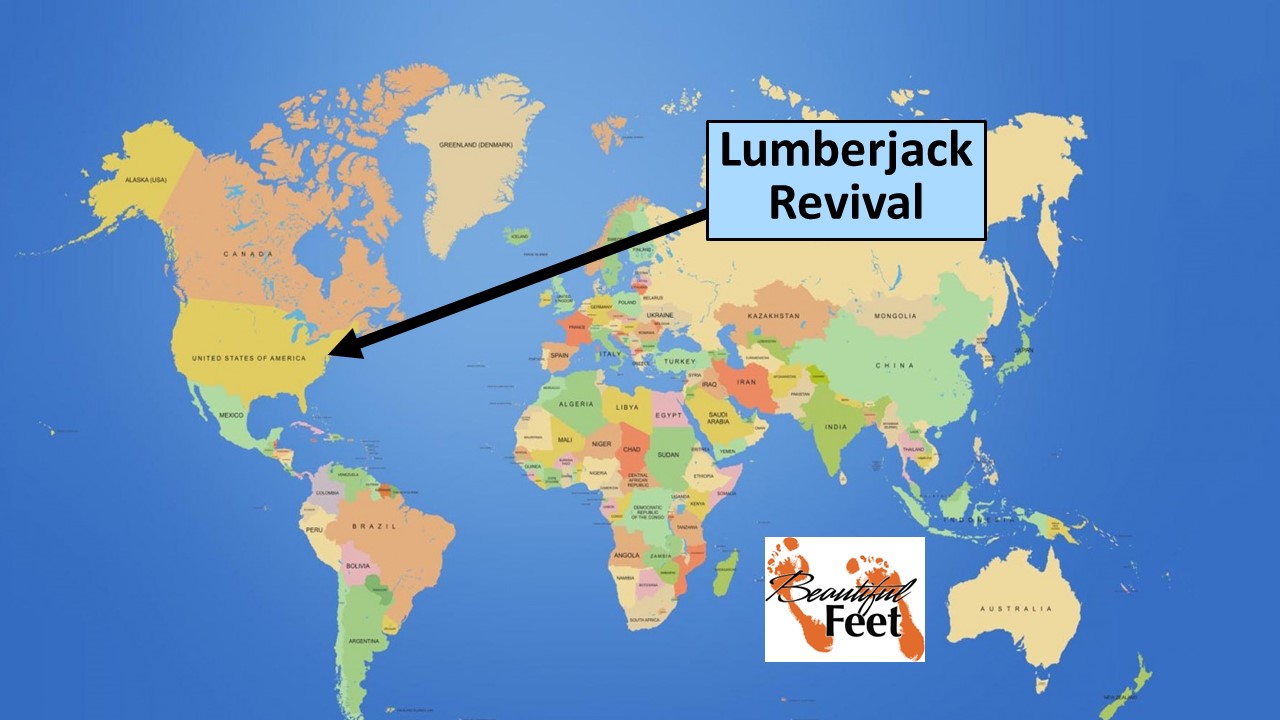
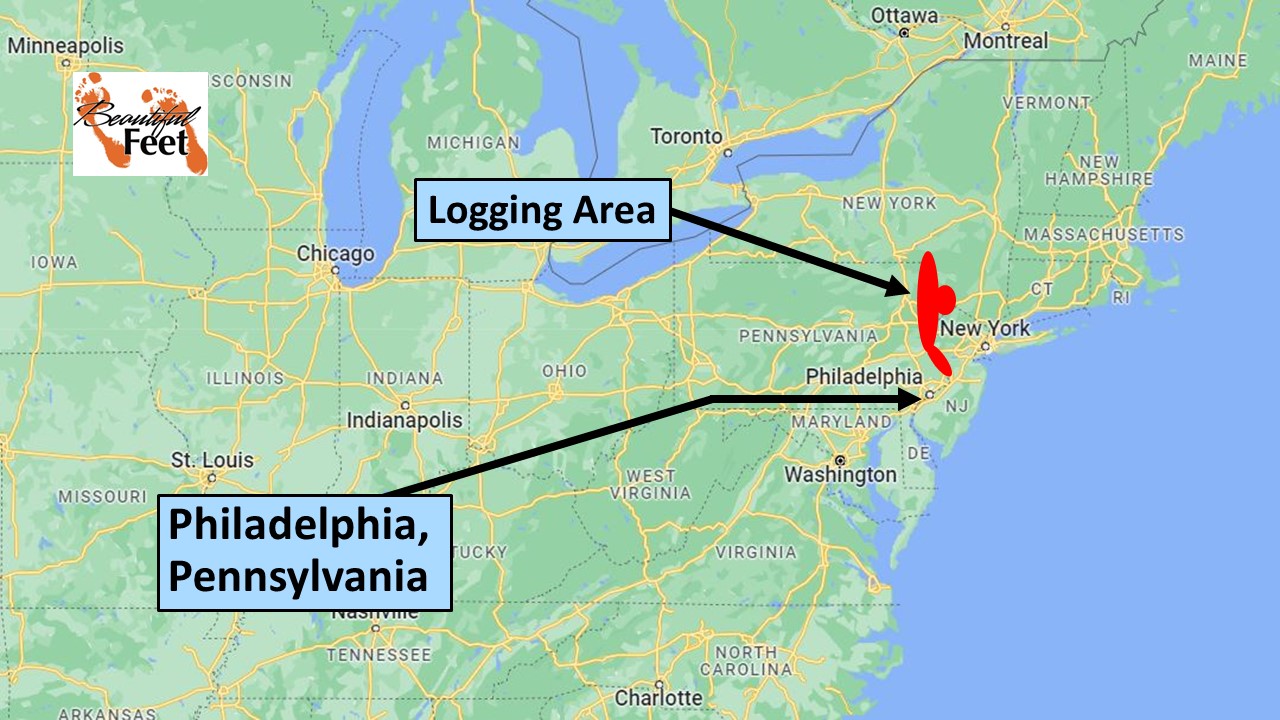
The revival ran 80 miles along a stretch of the Delaware River
where logging operations were underway
Background to the 1828 Lumberjack Revival
The upstream area of the Delaware River was a large logging region. The area was unsettled and unoccupied except by loggers. These men had their families there, raising them in the “wilderness,” where there were no schools, churches, or opportunities for religious training.
During the months when the Delaware River was low, the lumberjacks would cut the trees down and line them along the bank of the river. During the spring of each year, when the snow had melted and combined with the spring rains, causing the Delaware River to rise, these loggers would make rafts out of their logs and float them downstream to the industrial area around Philadelphia where they could be sold.
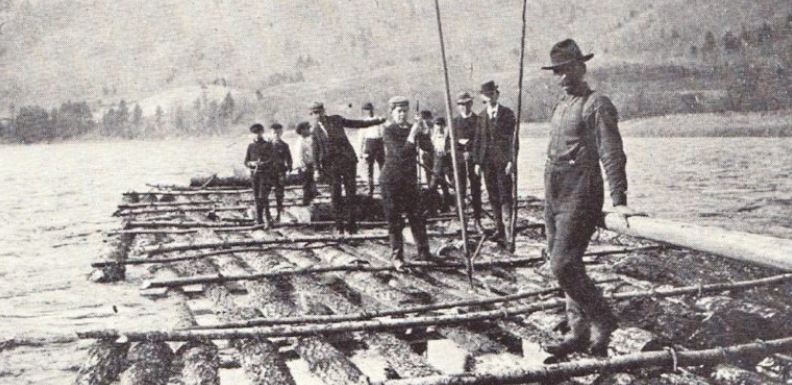
Logs made into a raft, being floated downstream to be sold
Lumberjacks Convert to Christ
In the spring of 1828, while Revivalist Charles G. Finney was conducting the Philadelphia Revival, loggers attended those meetings and many of them were converted to Christ.
Immediate Evangelization by New Converts
When the newly converted lumberjacks returned to the wilderness areas at the headwaters of the Delaware River, they began to pray for an outpouring of the Holy Spirit. At the same time they began telling others about the revival they had witnessed in Philadelphia. They also began to press upon others the vital need for placing their faith in Christ for salvation.
Immediate Conversions
As these fired-up new converts were sharing their faith, the message was accompanied with power, and people listened, with the number of converts spreading throughout the region.
Many of these conversions occurred without the people ever attending a meeting, and even more remarkable was that those sharing the Good News had little to no biblical knowledge. Here is how Charles Finney described them:
They were almost as ignorant as heathen.
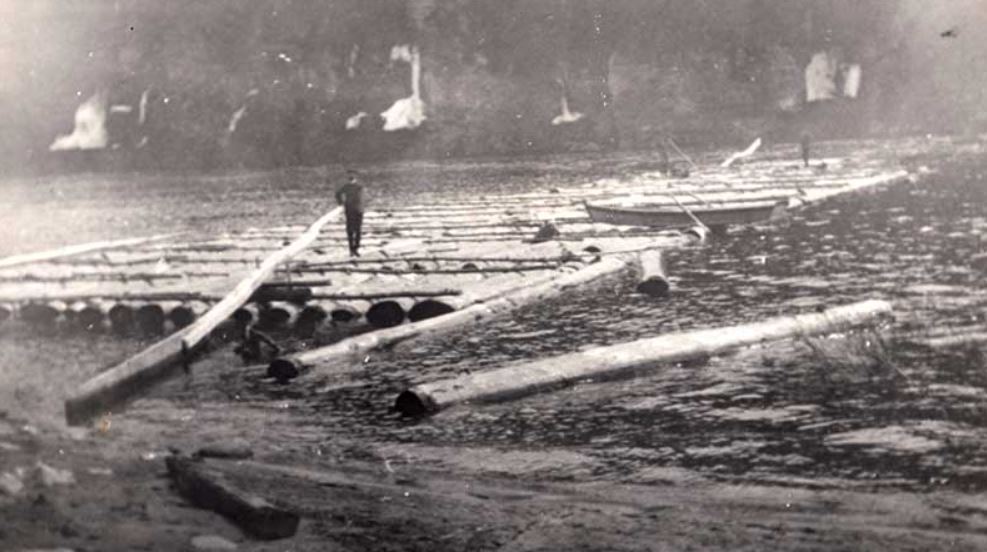
Raft made of logs
What Must We Do to Be Saved?
Some men, living in small shanties, would come under tremendous conviction of their sins, and without even having a sermon preached, they would wander about, looking for someone to tell them what they must do to be saved.
One lumberjack, after having placed his faith in Christ, expressed his deep desire for the salvation of others. His prayer was this:
Lord, You have got me down, and I hope You will keep me down. And since You have had so good luck with me, I hope You will try other sinners.
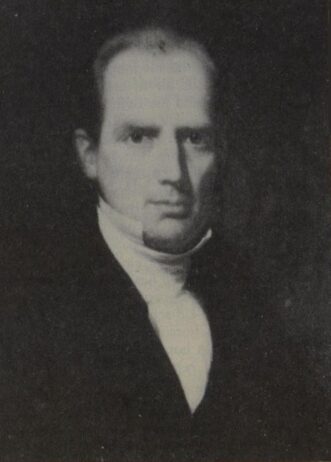
Charles Finney
Results of the Revival
In the spring of 1831, while Finney was conducting the Auburn, New York Revival, several lumberjacks from the Delaware River logging region came to Finney, asking how they could get ministers to go and live in their area. At that time they gave Finney the following information about the revival they were experiencing:
► Not less than 5,000 had been converted.
► The revival among the lumberjacks covered an area of 80 miles.
► There was not a single minister that was leading the movement. It was led by simple people who were led by the Holy Spirit.
Primary Sources
► Chapter XVIII Revival at Wilmington, Delaware and Philadelphia, Pennsylvania: The Memoirs of Charles G. Finney by Charles G. Finney
► The Memoirs of Charles G. Finney: The Complete Restored Text by Charles G. Finney
Secondary Sources
► Charles G. Finney by Wikipedia
► Charles Grandison Finney & the Second Phase of the Second Great Awakening by Christian History Institute
► Eerdman’s Handbook to Christianity in America by Mark A. Noll
► Fire From Heaven by Robert Evans
► Great Revivals and the Great Republic by Warren Candler
► Man of Like Passions: The Life Story of Charles Grandison Finney by Richard E. Day
► Memoirs of Revivals of Religion by Charles G. Finney
Return to List of Revival Stories
Chet & Phyllis Swearingen:
Office: (260) 920-8248
romans1015@outlook.com
Beautiful Feet
P.O. Box 915
Auburn, IN 46706

